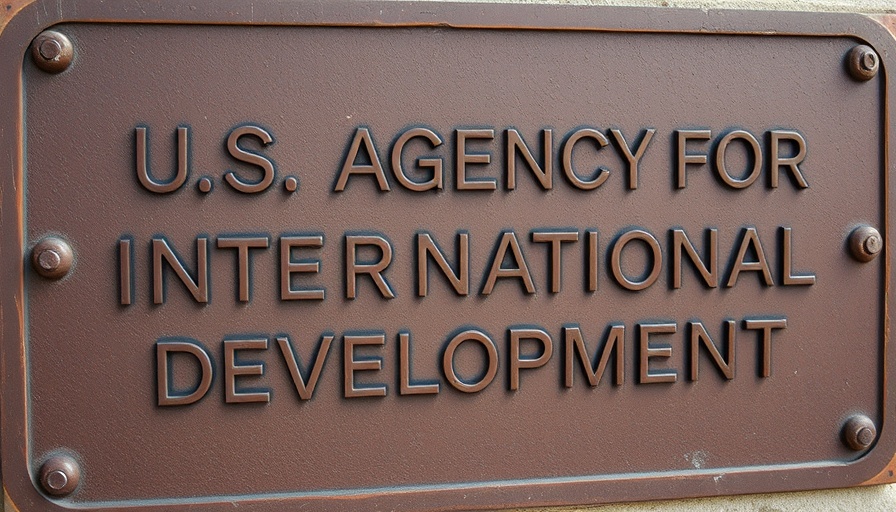
Rethinking Blockchain's Role in Humanitarian Aid
Recently, the Trump administration has proposed a radical reorganization of the United States Agency for International Development (USAID), originally aimed at enhancing the agency's effectiveness through blockchain technology. The plan, which seeks to rename the agency to US International Humanitarian Assistance (IHA) and realign it directly under the Secretary of State, raises significant questions among experts and practitioners in the field of humanitarian aid.
The Potential Impact of Blockchain on Aid Distribution
The proposed use of blockchain is touted as a means to enhance security, transparency, and traceability in aid distribution. The initial memo suggests that integrating blockchain into procurement processes will not only streamline operations but also motivate implementing partners by emphasizing tangible outcomes over procedural fulfillment. However, experts like Linda Raftree express skepticism, pointing out that the aid sector has yet to identify compelling use cases where blockchain provides clear advantages over existing systems. This skepticism is echoed by Giulio Coppi, who stresses the limitations of blockchain compared to traditional payment systems.
Historical Context: Why the Hesitance?
The hesitance among humanitarian organizations to adopt blockchain technology stems from various historical experiments that failed to bring about meaningful change. The humanitarian sector has often operated using established channels and systems that are reliable and sufficiently transparent for its needs. With multiple tools already in place, the introduction of blockchain might not solve existing challenges but create unnecessary complications—a phenomenon recognized as a 'solution looking for a problem.'
Current Trends: Can Technology Revolutionize Humanitarian Aid?
Although the integration of advanced technologies including blockchain is a growing trend across various sectors, its application within humanitarian aid remains limited. Remote monitoring, AI, and data analytics enhance operational efficiency in various fields, but blockchain’s success story in the humanitarian sector is still being written. The emphasis on technology must be balanced with a clear understanding of practical needs and existing infrastructure.
The Future of USAID: Do Innovations Lead to Progress?
As USAID navigates structural changes, the pressing question becomes whether the adoption of blockchain will genuinely foster innovation. Critics argue that without clear objectives and a thorough understanding of how blockchain could enhance existing systems, the move may simply become a tech buzzword unsupported by substantial outcomes. Decision-makers must weigh not only the potential efficiencies promised by new technologies but also the actual benefits and organizational fit to ensure that aid reaches those in need effectively and efficiently.
Final Thoughts: Examining the Role of Blockchain
In conclusion, while the concept of integrating blockchain technology into humanitarian efforts has sparked interest, the feasibility and effectiveness of this approach are under scrutiny. As USAID continues to evolve, it must focus on practical solutions that meet the nuanced demands of aid delivery rather than get swept away in the allure of high-tech promises without proven benefits.
Ultimately, as we look to the future of USAID and its reorganization, a careful consideration of existing tools combined with a critical assessment of new technologies will be essential to advancing humanitarian impact. Mobilizing efforts that are transparent, efficient, and tailored to the needs of beneficiaries must remain paramount.
 Add Row
Add Row  Add
Add 




Write A Comment